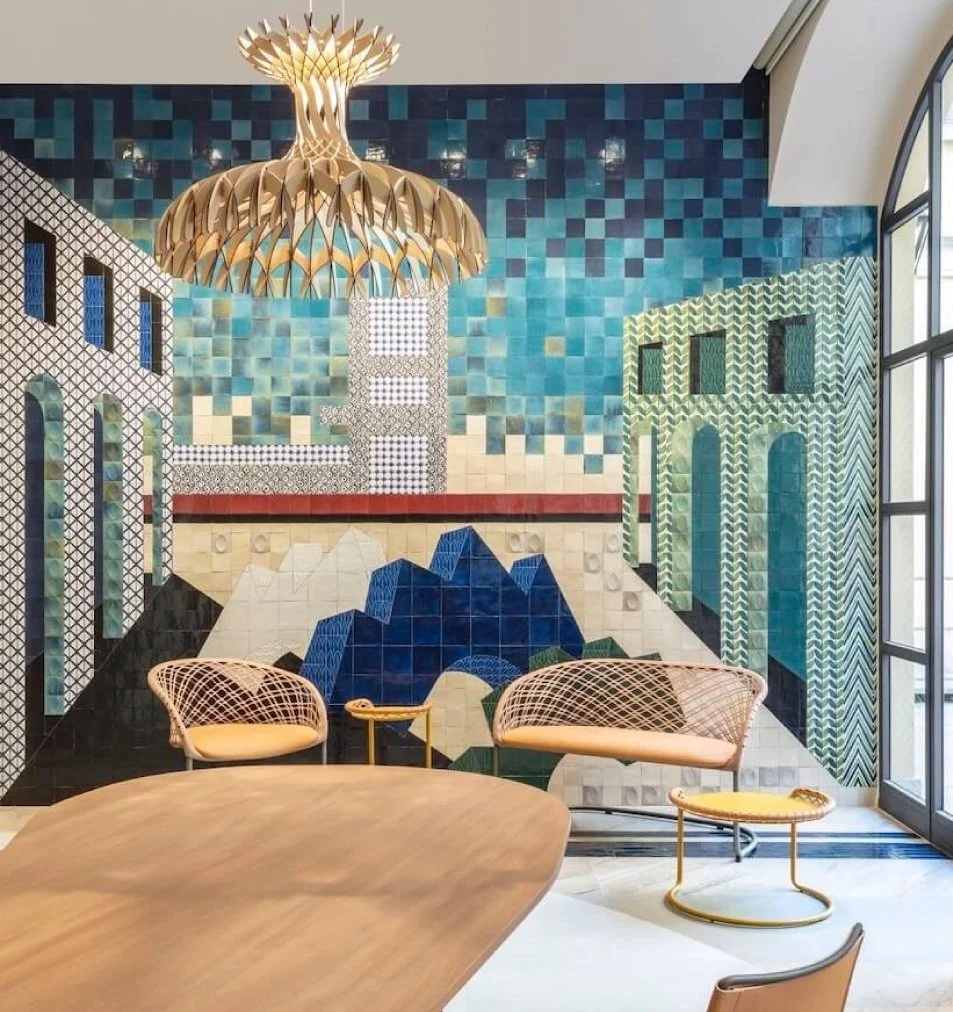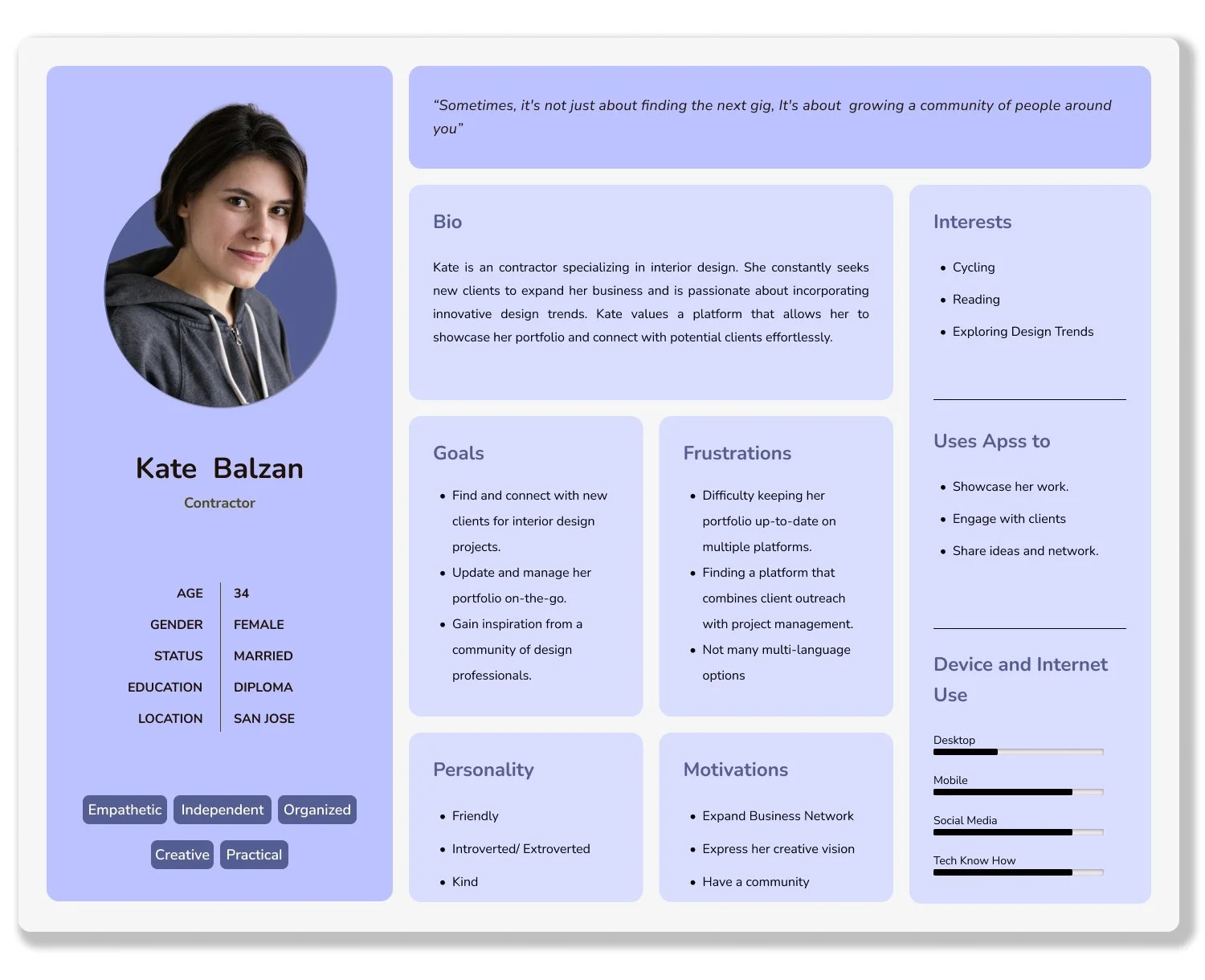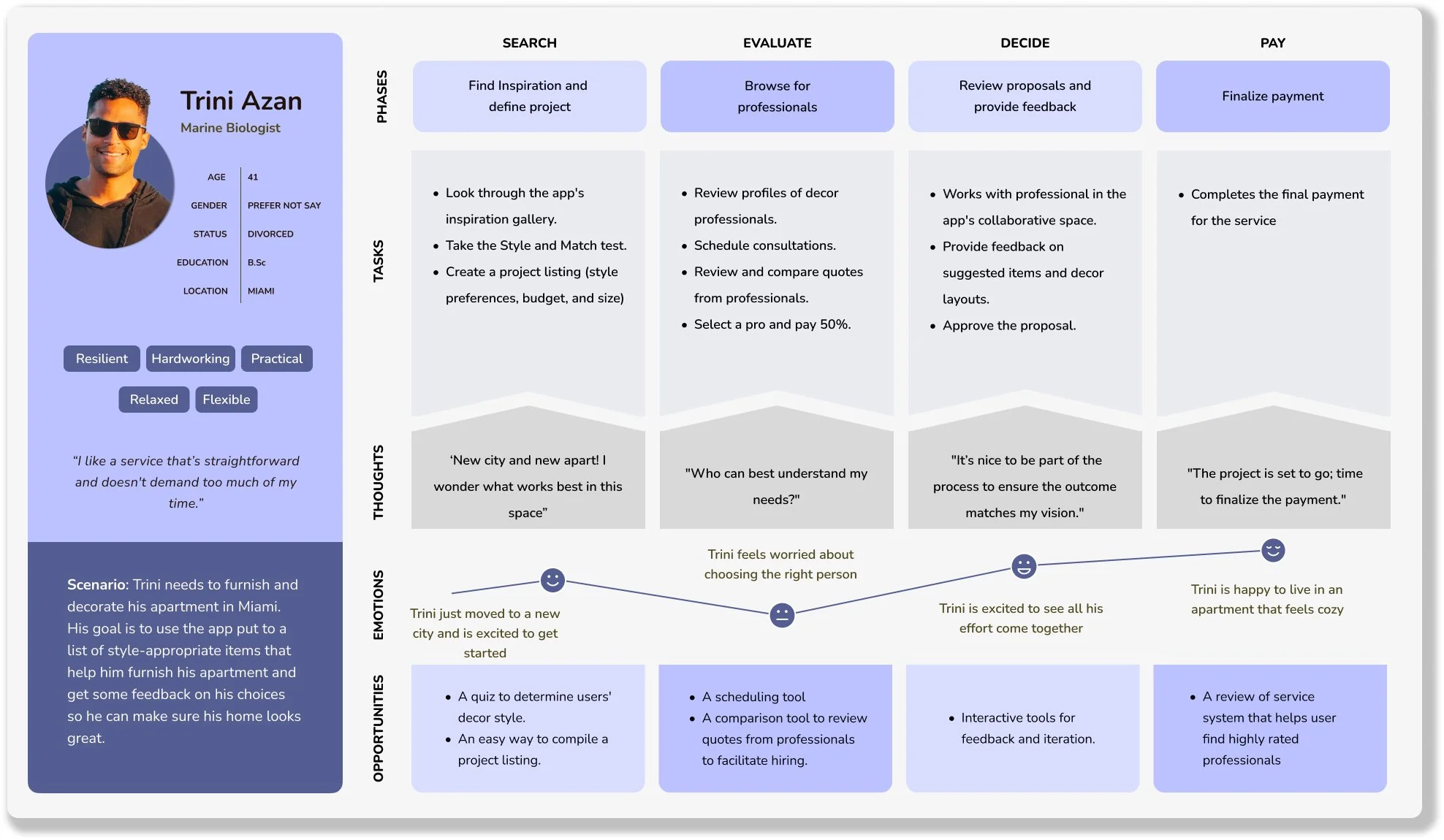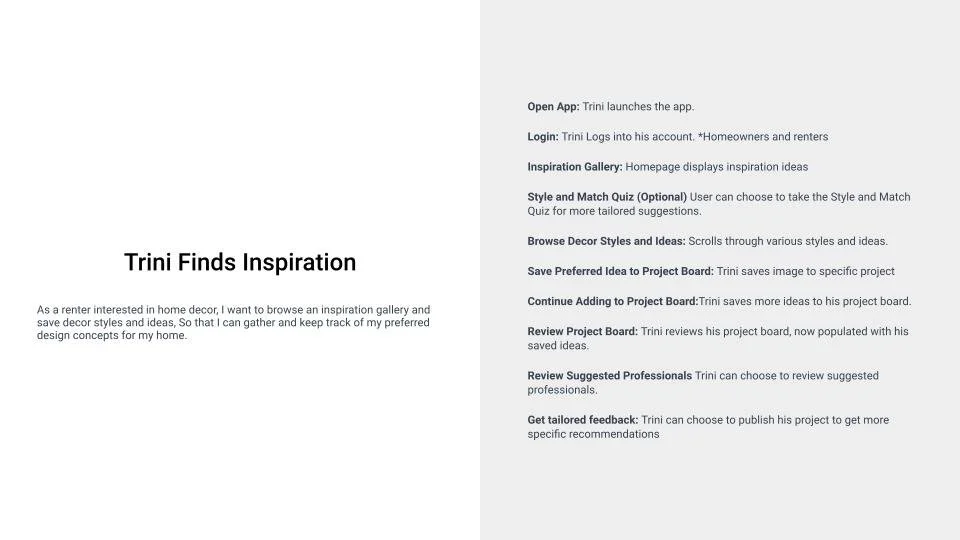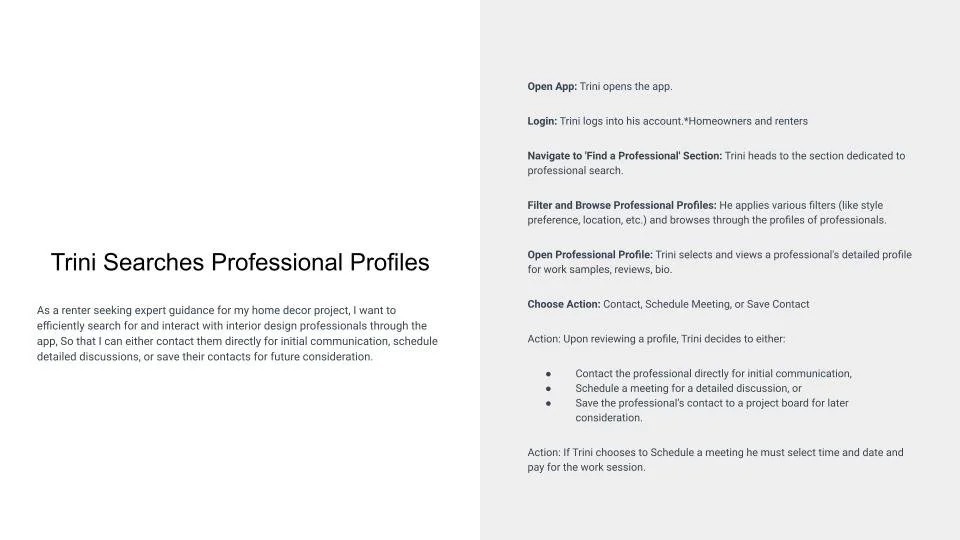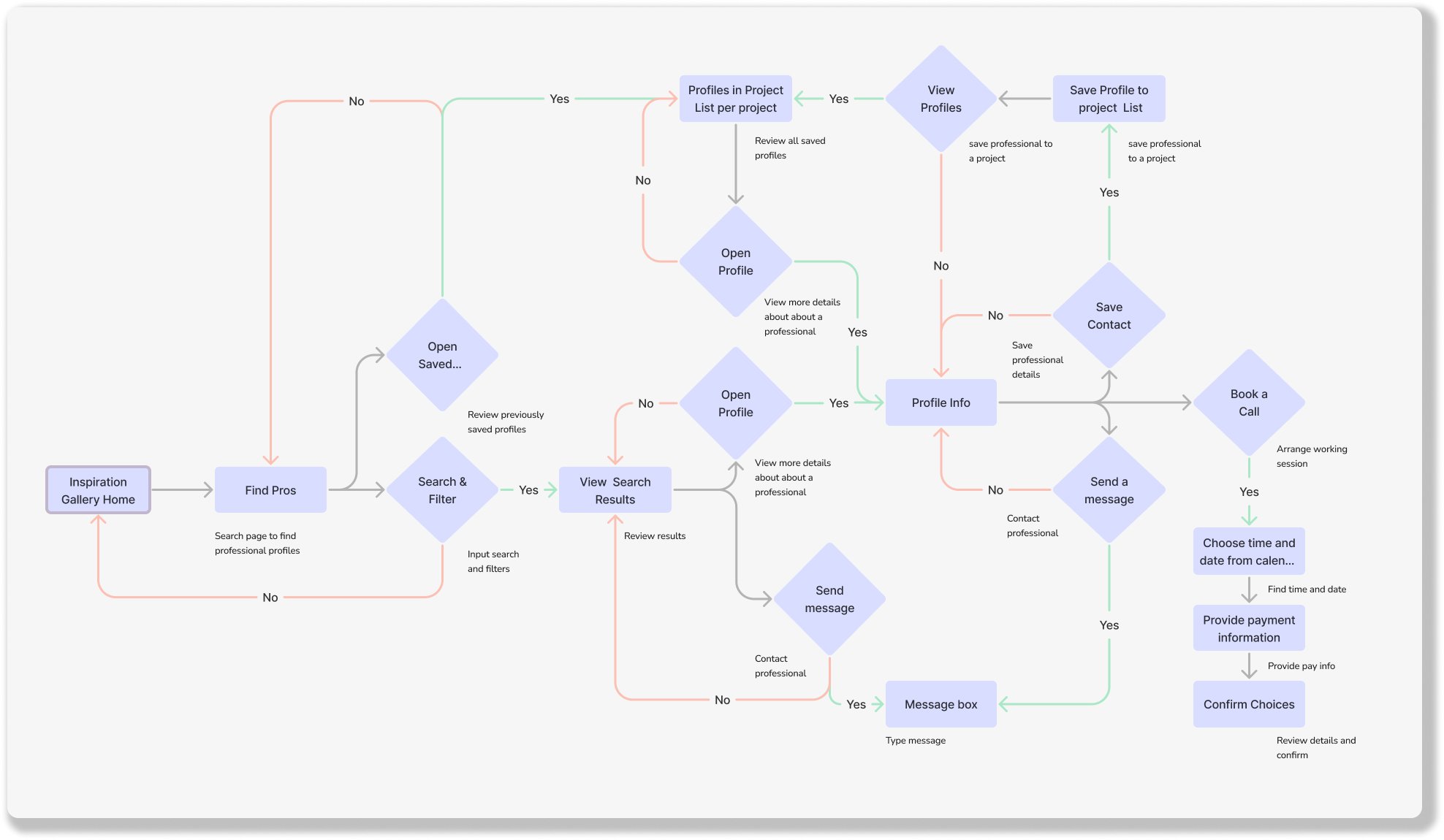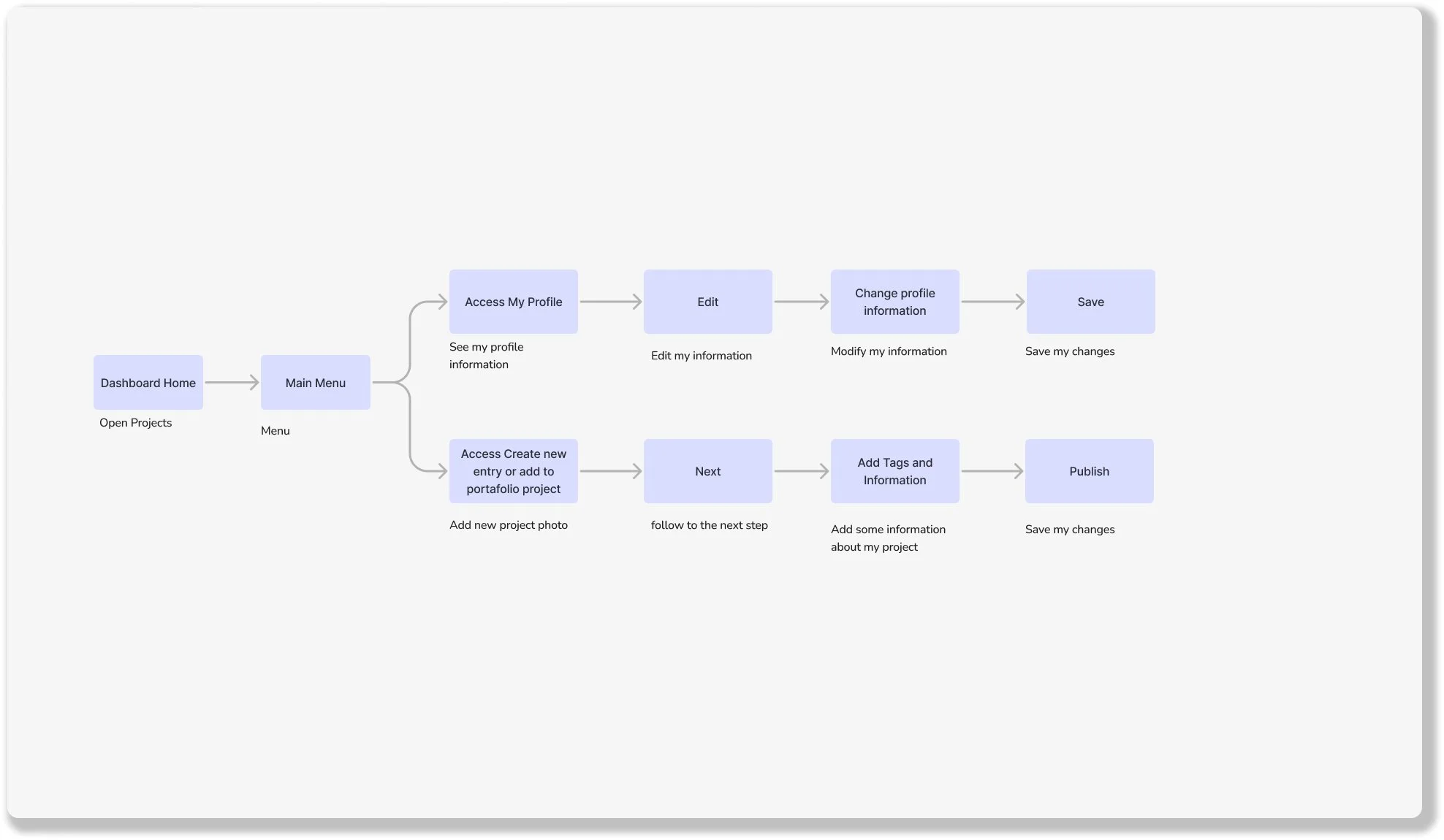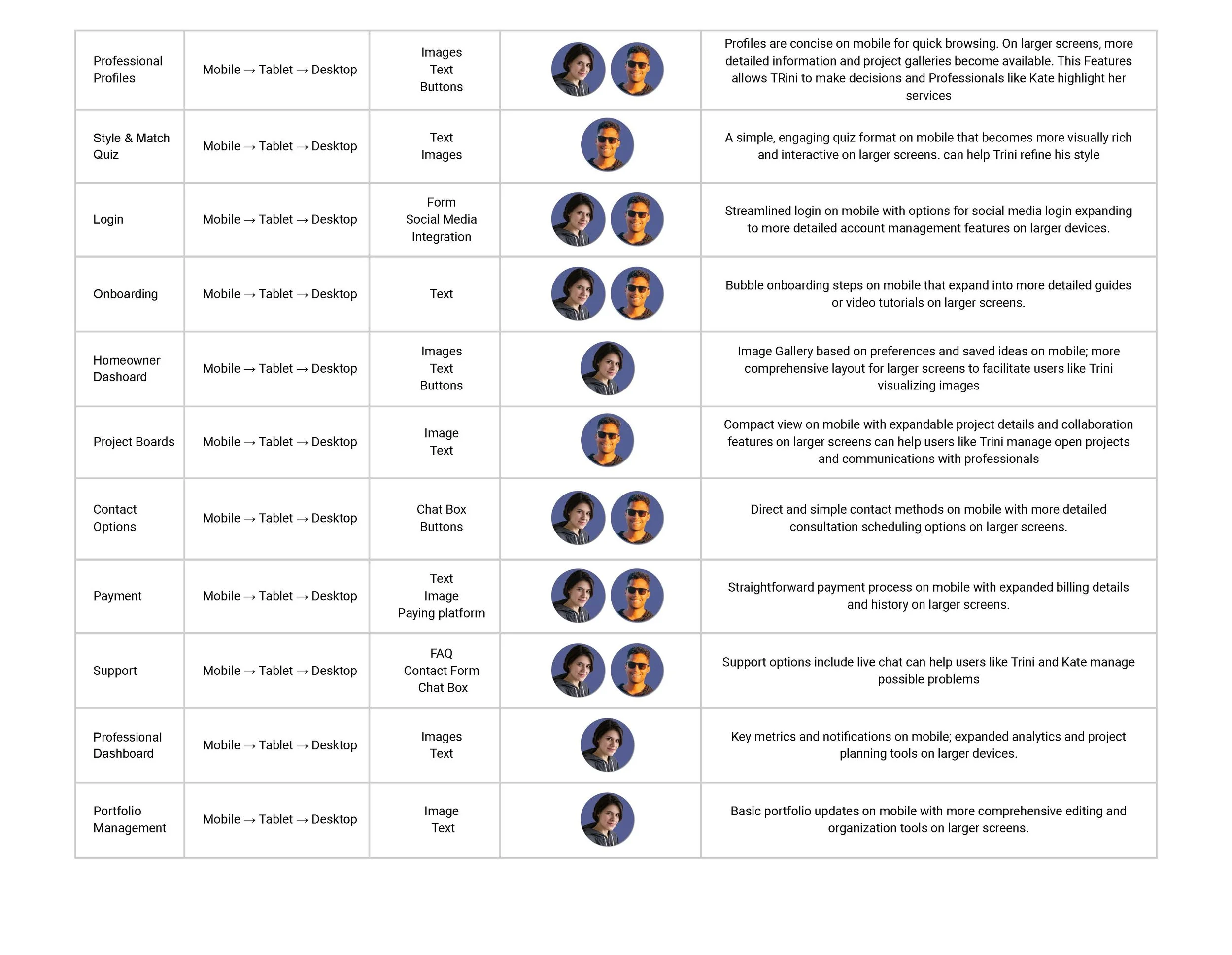Caracol
UX Research
Overview
As we started designing the user experience for Caracol, we needed to make sure that user and business goals were aligned. To achieve this, I focused on generative research methods that can help us explore what users think about the available options for finding home decor professionals. This provided us with the most strategic direction to take for the product.
Research Methods
To build on our focus for Caracol, I have chosen User Interviews, Field Studies, and Card Sorting as the research methods. Using these methods, we can gain a comprehensive understanding of user needs.
User interviews allow for open-ended discussions that can help me learn about the specific challenges users face when finding home decor professionals, their past experiences with similar platforms, their decision-making processes, and their desired outcomes.
Field Studies are valuable for understanding the real-world context in which homeowners and renters make decisions about home decor and seek professionals.
Card Sorting can teach me about users' expectations for how content should be organized and prioritized on the platform, how users expect to find and filter professional profiles, sort project ideas, or navigate different services.
Research Question
How can we effectively match homeowners and renters seeking personalized home decor solutions with relevant professionals, ensuring satisfaction and engagement for both parties?
Research Goals
To better understand what end users value most when seeking home decor professional services.
To better understand how professionals generate leads.
Discover challenges or frustrations end users face when looking for home decor services.
Discover challenges or frustrations professional-seeking clients face when generating leads.
Collect data on the context in which end users and professionals use digital home decor tools.
Demographics
Adults 25 - 55 who are interested in home decor and design projects.
Singles and families, including newlyweds.
Young professionals, including Architects, Interior Designers, and Contractors
Interviews Affinity Diagrams
Insight List
Search
Users identify their needs and preferences and explore professional options.
End users like to browse through personalized visual suggestions to define their own project style.
End users want to find the right professionals quickly, using specific criteria like the property type, the project scale, and past client reviews.
Professional users prefer a portfolio tool that is flexible and adaptable.
Interview Analysis
Evaluate
In-depth evaluation of professionals through portfolio reviews and communication.
Users like to communicate easily and effectively about their projects in multiple languages.
Users think it is essential to be able to save the profiles of professionals they are interested in and come back to them later when making decisions.
Users think that working together on the project makes it easier to define the scope.
Decide
Final decision-making based on insights, communication, and platform tools.
Professionals think that understanding market trends and consumer behavior is helpful for generating and qualifying better leads.
End users like to keep track of their active projects, budget, and delivery times.
User Personas
I interviewed target market users and created personas that closely aligned with research findings. For instance, Daniel's profile influenced Kate Balzan's persona, which caters to non-English speakers and emphasizes visual project planning. Similarly, Erica and Hamlet's perspectives reflected the importance of personalized service, easy navigation, and vetted professional profiles, is reflected in Trini´s profile.
Market Size and Spending Habits
Through the research I identified two primary user groups:
Professionals (Architects, Interior Designers, Contractors): These 'Kates' represent a significant portion of the home decor and renovation market. In the U.S. alone, there are over 113,000 interior designers, with the industry generating around $10 billion annually. Professionals typically spend 10-20% of their revenue on client acquisition and lead generation. Professionals often frequent industry-specific platforms like Houzz, Archinect, and LinkedIn, as well as offline networking events and trade shows.
End-Users (Homeowners, Renters): The 'Trinis' of our market are the users who spend an average of $8,000 on home improvement projects. The global home decor market is projected to reach $838.6 billion by 2027, reflecting the vast potential of this segment. End-users are active on platforms like Pinterest and Instagram for inspiration and on forums and community groups for reviews and recommendations.
User Journeys for Trini and Kate
Why was our research valuable
Our research helps us align user and business objectives for Caracol. It revealed gaps and specific needs not fully addressed by other apps. Professionals in the field voiced a need for efficient and cost-effective ways to generate leads, while end-users expressed a desire for personalized, straightforward services for their home decor projects.
To directly address these needs, we have the following hypothesis:
For professionals: A dedicated dashboard and streamlined portfolio management, enhancing project management and lead generation capabilities.
For end-users: Personalized recommendations designed to facilitate the home decor experience through easy navigation, customized suggestions, and interactive project planning features.
User goals and business objectives are aligned through:
Personalized User Experience: Offering personalized recommendations in decor planning and professional matching aligns with users' desire for tailored home decor solutions and professionals' need to connect with relevant leads.
Empowerment of Designers and Service Providers: By providing an easy way to showcase portfolios and receive leads, Caracol supports professionals in their growth and satisfies users' needs for expert guidance in their projects.
Community Building: The app serves as a valuable networking tool for professionals to expand their reach and connect with peers.
Streamlined User Journey: Ensuring an intuitive and easy-to-use process, the app fulfills the need for efficient project management and client communication.
Task Analysis and User Flows
Mobile First Design Plan
IA Sitemap
The identified trends and disparities among participants provided valuable insights into user expectations and preferences. Recognizing clear user consensus on categories like 'Discovery / Inspiration' and 'My Pro' is crucial for understanding key functionalities. At the same time, the varied groupings of content related to professional capabilities highlight the need for a tailored approach, particularly for professional users who may have specific requirements. In response, the new sitemap focuses on emphasizing these well-defined categories for a general audience while maintaining a dedicated area for home decor professionals to ensure that their unique needs are met.
Looking back
Upon reflecting on the sitemap creation process, it became evident that employing predetermined categories during card sorting would have been more effective than having users generate their own. This structured approach would have simplified the information architecture process and made the sorting results clearer and more actionable. The key lesson here is the importance of categorization when dealing with a product with multiple user goals.
Addressing edge cases is a critical component of a comprehensive design strategy, especially for a platform like Caracol that serves a broad spectrum of users in the home decor and professional design industry. Here's how these aspects could be integrated into the project:
Edge Cases
Non-Traditional Living Spaces and Progressive Building: Users living in non-traditional spaces such as tiny homes or those who renovate in stages throughout the years may have unique design needs that standard platforms overlook. Tailoring features to accommodate these users can broaden the platform's appeal and utility.
Accessibility and Inclusivity: Ensuring the platform is fully accessible to users with disabilities is crucial. This includes voice navigation for the visually impaired, captioning for videos for the hearing impaired, and ensuring all interactive elements are easily navigable with assistive technologies.
Cultural and Regional Variations: Design preferences can vary significantly across cultures and regions. Incorporating features that adapt to these variations, such as localized content, regional design trends, and multilingual support, would enhance user experience.
What would I do differently?
What lessons did I learn?
